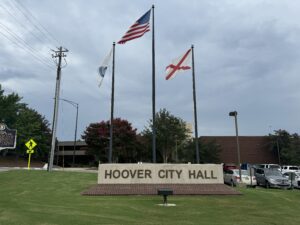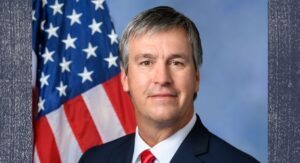UAB provides first results of ‘Carly’s Law’ study
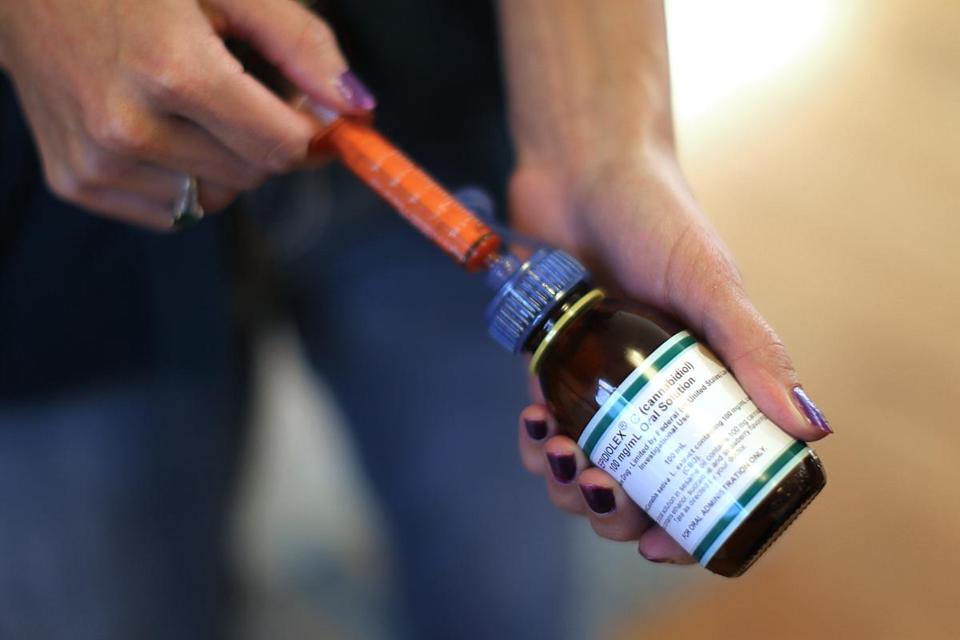
The University of Alabama at Birmingham released results from its Cannabidiol Program study, which was created to test the efficacy and tolerability of CBD oil, a marijuana-derived medicine with only trace amounts of the high-inducing chemical THC meant to assist in the quelling of seizures. According to the results, half of the 51 patients saw sustained improvement of seizure control – specifically a 32 to 45 percent decline in seizures depending on the dose. Two patients were seizure-free at the end of the study and nine others were forced to drop out due to side effects or ineffectiveness. Currently, 49 children and 30 adults are enrolled in the studies. “The studies are ongoing, and we have a lot more to learn; but these preliminary findings are encouraging,” Jerzy Szaflarski, M.D., Ph.D., professor in the Department of Neurology and principal investigator of the adult study said in a press release. “Among our goals was to determine the safety of CBD oil therapy, and it appears that, in many cases, patients tolerate the oil quite well. The evidence of seizure reduction gives us hope that, the more we learn about CBD oil, the better we will be able to tailor this therapy to provide relief for those with severe epilepsy.” The study began in April of 2015 after the legislature unanimously passed “Carly’s Law” the year before. While the legislation approved the study of the CBD oil on patients with intractable seizures, it has drawn the ire of many CBD supporters who complain that the studies aren’t inclusive enough. “Leni’s Law,” sponsored by Rep. Mike Ball (R-Madison), seeks to decriminalize the oil at the center of the UAB studies in order to make it more readily available to desperate citizens throughout the state. The law’s namesake, Leni Young, and her family fled Alabama to seek relief in Oregon. Despite having been on the front lines of the push to pass “Carly’s Law,” Leni was left out of the initial study. While the medication that Leni receives is slightly different from CBD oil, or more specifically the epidiolex being given to patients in the “Carly’s Law” studies, she has improved by leaps and bounds since moving to Oregon. UAB’s results will be described at the annual American Academy of Neurology meeting in Vancouver, Canada, which takes place April 15 through 21.
Get to know Ron Crumpton, Democratic challenger to GOP incumbent Richard Shelby
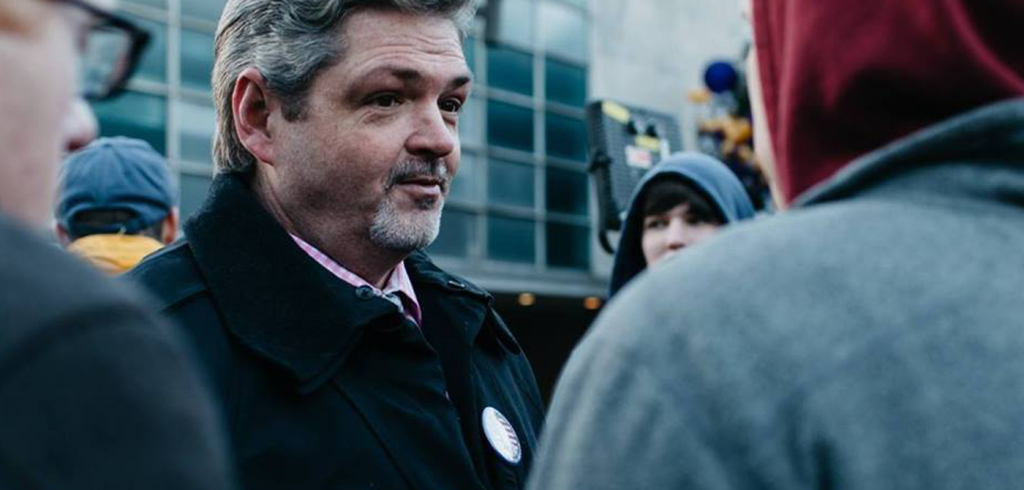
Sen. Richard Shelby, who has represented Alabama in Washington since 1986, is facing opposition on both sides this year. One of those opposing the long-time senator is Ron Crumpton, a Democrat from Shelby County with a history of political activism and big ideas for Alabama. Crumpton took his first job at Vestavia Bowl, where he learned to repair the various machines that run the bowling alley, and worked as a landscaper spring and summer. After a back injury ended his career in mechanics and landscaping, Crumpton pursued a degree in Political Science and Journalism at the University of Alabama at Birmingham. Originally planning to be a journalist, Crumpton wrote an article for UAB’s school magazine on the merits of medical marijuana. The article was picked up by several state news outlets and eventually led Crumpton to get involved with legislation that was making its way through the state Legislature. From there, Crumpton spent about eight years lobbying politicians in Alabama and testifying before multiple committees, including the first joint hearing on sentencing reform. When Jeff Sessions, Alabama’s junior U.S. senator, faced no opposition in 2014, Crumpton vowed that Shelby would not have that opportunity in 2016. “I was tired of seeing Republicans run unopposed,” Crumpton said. “And I was tired of seeing Democrats run to the right and get trampled in general elections.” Through his website, Crumpton has released an ambitious “9-Point Plan for the Economy” and an “11-Point Plan for Social Justice.” His plan for the economy calls for raising the minimum wage to $15 an hour, addressing equal pay for women, breaking up the “too-big-to-fail” banks, ending tax breaks for companies moving overseas, investing in infrastructure and education and more. “The majority of these schools are too small, antiquated and just don’t serve their purpose,” Crumpton said of his plan to invest in education. “How can we expect our children to learn the technology of the future when they’re using the technology of the past?” “You can’t be against raising the minimum wage and support cutting social programs and say you’re for the people of Alabama,” Crumpton said, taking a dig at Shelby’s record. Crumpton noted that Shelby currently sponsors and co-sponsors the fewest bills in the Senate and garners the lowest number of co-sponsors for his legislation. “Apparently, all he’s doing is running around fighting Obama,” Crumpton said. “That’s not doing the people of Alabama any good.” While Crumpton acknowledged it will be difficult to match Shelby’s campaign account – whose money comes mostly from Boeing, Lockheed Martin and others, according to OpenSecrets.org – he believes his message will effectively reach its audience. “I think Senator Shelby is under the misconception that working for defense contractors is the same as working for Alabamians; it’s not,” Crumpton said. “I think we can get the support; we’ve just got to point out that he’s not working for Alabama.” Specifically, Crumpton plans to discuss Shelby’s votes to raise the retirement age, to turn Social Security into a voucher program, and to create a flat-tax that would cause seniors to pay highers taxes on Social Security and Medicare benefits. Further, Shelby has voted against provisions to assist veterans and Sessions has called such efforts an “entitlement we can’t afford.” “I think our veterans are an entitlement that we can afford,” Crumpton said. “We seriously need to look at how we do things in this country and in this state.” — This part is part of our ongoing “Get to know” series spotlighting the various candidates in the 2016 Senate race. Click here to get to know the other candidates we’ve highlighted thus far.
UAB President Dr. Ray Watts to lead Birmingham Business Alliance in 2016
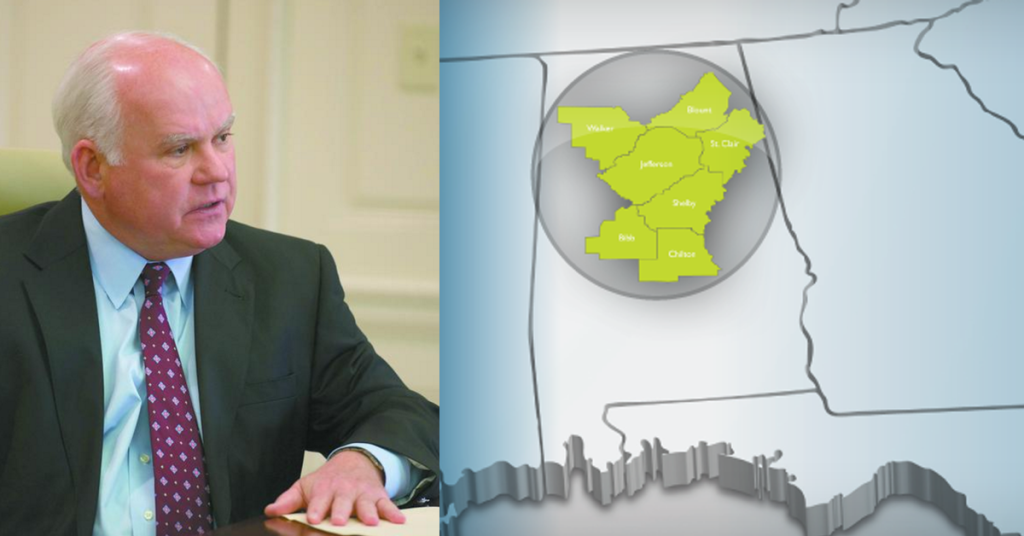
University of Alabama at Birmingham‘s President, Dr. Ray Watts has been elected Chairman of the Board of the Birmingham Business Alliance for 2016. A Birmingham native and graduate of West End High School, Dr. Watts earned a bachelor’s degree in engineering at UAB in 1976. He succeeds Mark Crosswhite, CEO of Alabama Power Co. “I am excited and honored to be serving as Chairman of the BBA in 2016,” said Dr. Watts. “We will build on the momentum our region has seen in recent years with strategic planning and investment and I think the result will be a powerhouse of innovation and economic development throughout our region and known around the globe. The BBA and UAB will continue to work closely throughout the year with our elected leaders and economic development allies to capitalize on our strongest assets and take our region to the next level.” “I also want to thank Mark Crosswhite for his strong support of our community and his leadership of the BBA in 2015, which has been exemplary,” Watts continued. “He has lent his wisdom and time to numerous complex regional issues and has worked hard behind the scenes to move our community forward in very positive ways.” Also elected were members of the BBA’s 2016 Executive Committee and Board of Directors. Each serves a one-year term. The 2015 officers are as follows: Dr. Ray Watts of UAB, BBA Chairman Lee Smith Jr. of BBVA Compass, BBA Chairman-Elect Fred McCallum of AT&T Alabama, Vice Chairman of Public Policy Craft O’Neal of O’Neal Industries, Vice Chairman of Finance Mark Crosswhite of Alabama Power Co., Immediate Past Chairman Brian Hilson is President and CEO of the BBA Bing Edwards of Balch & Bingham, Corporate Secretary
UAB testing new drug to prevent deaths due to blood loss

Scientists at the University of Alabama at Birmingham are carrying out the first Phase 1 human trials of a drug developers hope will keep patients with traumatic injuries from dying due to severe blood loss. The ambitious new pharmaceutical – a synthethic molecule derived from the female hormone estrogen – can help stop hemorrhaging in arenas like overseas battlefields or dangerous domestic settings. The study comes with a three-year, $10 million contract from the U.S. Department of Defense’s Combat Casualty Care Research Program and is a boon to the university’s medical and health programs. The study is based off the original work of a UAB faculty researcher and Department of Surgery professor Dr. Irshad H. Chaudry. Chaudry, co-principal investigator on the prized DoD contract, drew praise from his colleague as the institution announced the ongoing clinical work on the drug, called EE-3-SO4 for purposes of the study. “The work of Dr. Chaudry and colleagues showed that EE-3-SO4 is extremely effective in improving cardiovascular functions and boosting survival rates following injuries with extreme hemorrhage,” said principal investigator Mansoor Saleh, M.D., professor in the in the university’s Department of Medicine. “This drug could have major implications for treating trauma, from battlefield injuries to life threatening hemorrhage following any injury. We are excited to be launching the first-in-human studies of this drug that was developed by one of our own here at UAB. This is a classic example of bench-to-bedside translational research,” said Saleh, who also directs UAB’s Phase 1 Clinical Trials Program. According to the University, the prospective drug works in three ways: It helps the heart beat more efficiently, enabling it to fully expand and contract while pumping to maximize blood flow. It lowers resistance to blood flow to vital organs, and then gradually elevates blood pressure and promotes sufficient blood flow throughout the body. It recruits fluid from surrounding tissue, increasing blood volume to compensate for blood loss from the wound or injury. The contract also has a tie-in with the school’s business college. UAB’s B.L. Harbert Institute of Innovation and Entrepreneurship is managing two pending U.S. patent applications of EE-3-SO4, on which Dr. Chaudry is listed as an inventor. Securing such a patent would be a landmark for the institution. The UAB press center has put together a backgrounder on the research science that led to the invention of the potentially game-changing drug, which can be found here.
UAB professor, archaeologist Sarah Parcak win $1M Ted Talk prize
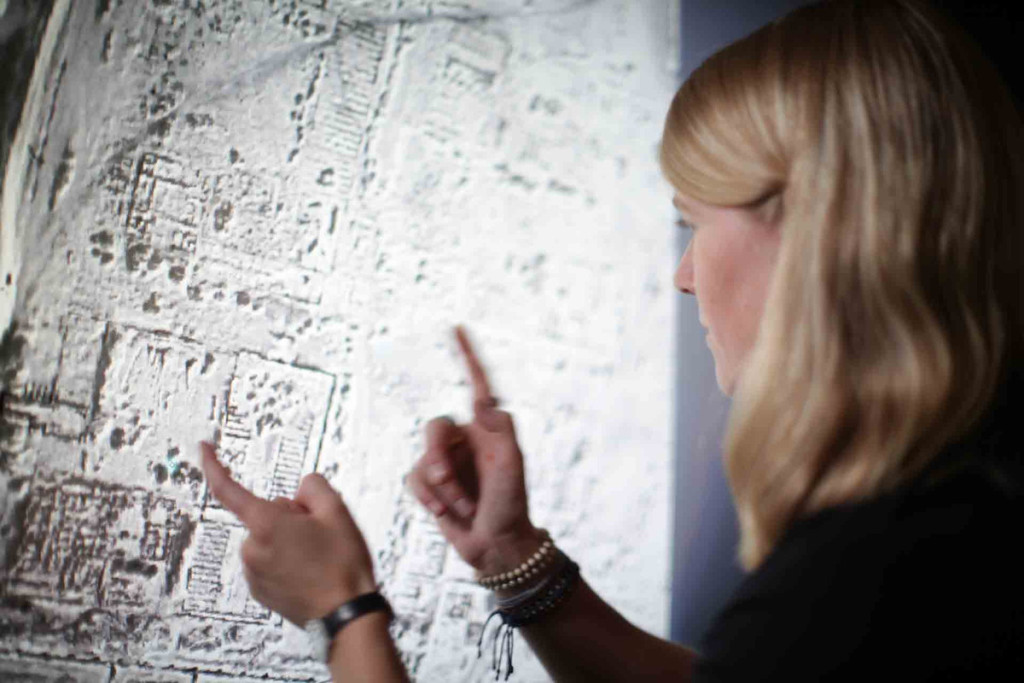
Billed as a modern world “Indiana Jones,” the renowned archaeologist specialist in Egyptology at the University of Alabama at Birmingham, Sarah Parcak was announced Monday as the 2016 TED Prize winner. The highly-coveted $1 million grant is awarded annually to just one exceptional individual whose creative, bold vision sparks global change. Parcak plans to use prize money in saving archaeological sites in the Middle East. “The last four and half years have been horrific for archaeology. I’ve spent a lot of time, as have many of my colleagues, looking at the destruction,” Parcak said accepting the prize. “This Prize is not about me. It’s about our field. It’s about the thousands of men and women around the world, particularly in the Middle East, who are defending and protecting sites.” Across the globe, the UAB archaeologist is helping countries preserve history by using satellites identifying ancient sites lost in time. In Egypt alone, Parcak helped locate 17 potential pyramids, plus an additional 1,000 forgotten tombs and 3,100 unknown settlements. She’s discovered even more throughout the Roman Empire. Sarah “uses 21st century technology to make the world’s invisible history visible again,” the TED blog explained. Parcak will announce the details of her project in February in Vancouver, British Columbia, during a live TED conference. “In a session that will be broadcast for free to the world, she’ll reveal a wish to allow curious minds everywhere to play a part in preserving our global heritage,” claims the TED website. “It’s a wish about the wonders of archaeological discovery and our connection to the past.” Sarah was first introduced to the world of TED in 2012, when she gave a famous speech on archaeology from space. Watch it below:
Alabama business roundup: Headlines from across the state

One of the world’s most popular video games is teaming up with Alabama to help vets — find out which one. How close is UAB to restoring their football program? There’s a degree for brewing beer? See which Alabama company is suing the EPA. All this and more inside today’s business roundup of headlines from across the state: Birmingham Birmingham Journal: UAB hits initial $2M goal toward restoring football The University of Alabama at Birmingham has exceeded its $2 million goal toward restoring its football program. According to AL.com, Hatton Smith – the Royal Cup executive tasked with leading efforts to raise $13 million toward facility improvements – said the fundraising committee already has more than $2 million cash in hand. Last month, prospective donors were asked to submit their initial donations by Sept. 1, instead of the original Dec. 31 deadline for first payments. Smith said in the report that the accelerated timetable was “to meet requirements set forth by the (University of Alabama System) Board of Trustees. Smith is leading a team of heavy hitters who are raising money for the program’s reinstatement following the school’s controversial decision to cut the football program following the 2014 season. Several business leaders were critical of the initial decision, saying UAB football was a missed opportunity for Birmingham, specifically its potential impact on downtown development. Birmingham Business Journal: Alabama leads some, lags others for average debt Debt is a problem that plagues much of America, but for Alabama, it could be worse. A recent study from NerdWallet.com showed that Alabama ranks near the middle of U.S. states for debt, with the exception of debt caused by student loans. On the low end of the spectrum, Alabama’s average student loan debt was $28,895 – the 12th highest among states. Neighboring Mississippi ranked 19th for average student loan debt ($27,571), while Georgia ranked 37th ($24,517). However, Alabama ranked at 24th overall for states with the highest average credit card debt, at $3,784. Mississippi ranked 47th for the highest credit card debt ($3,416.53), while Georgia came in at 12th ($4,060.44) These numbers are small, though, when considering U.S. citizens have $703 billion in credit card debt alone. Alaska finished with the highest credit card debt for each state, with residents having an average revolving card balance of $5,081, Alabama’s best ranking was 34th highest average mortgage debt – $136,154.26. Georgia topped Alabama in this category ranking as the 20th highest ($162,916.66.) Mississippi also finished well for average mortgage debt, ranking 44th overall ($119,129.52). AL.com: Call of Duty video game teams with Alabama group to help vets The philanthropic heart behind one of the world’s most popular video games has found one of the best ways to put action to its money is to hook up with an Alabama-based veterans organization. The Call of Duty Endowment – the veterans-aid foundation behind the video game that features war-like scenes produced by Activision Blizzard – has bestowed the seal of distinction on Still Serving Veterans, a non-profit organization based in Huntsville that also has locations in Birmingham and Phenix City. Still Serving Veterans focuses in helping vets transition into their post-military lives. That certification has turned into real money for Still Serving Veterans, according to Dan Goldenberg, executive director of Call of Duty Endowment. During a recent visit to Still Serving Veterans in Huntsville, Goldenberg said the foundation began working with the Alabama group five years ago. Still Serving Veterans first received an award of $25,000 from the foundation. Then by meeting a series of metrics, the allotment has increased to a high of $777,000 last year, Goldenberg said. Altogether, the foundation has donated $1.75 million to Still Serving Veterans. “It’s only because they get better and better at what they do,” Goldenberg said. In 2013, Still Serving Veterans was among the 11 organizations to receive the first seals of distinction from the Call of Duty Endowment. There are now 18 veterans groups carrying the CODE seal of distinction. “These are organizations that can expand and find way to serve under-served vets,” Goldenberg said. “Still Serving Veterans has done a great job with that with their expansion all over the state.” For Still Serving Veterans, the partnership with CODE is confirmation that their process is effective. “We appreciate as a business-oriented, business-focused non-profit, a partner that is savvy enough and also business-oriented to give us that leeway,” said Will Webb, co-founder and president of Still Serving Veterans. “I came up with a way to explain it as verify by trust. Which is kind of a flip on President Reagan’s trust but verify. What they do is they verify you are the best, most efficient, effective and integrity-based organization. But once done, they trust them to do the right thing if they make the metrics. “For an organization that is similarly focused, we love that. We love for somebody to check us out, give us the thumbs up and give us the ball and let us run with it — an increasingly more lucrative ball. With a partner like that, then we can go to the next level and really leverage what we’ve done. It’s a great partnership.” CODE has set a goal of placing 25,000 veterans in jobs by 2018 by working through partners such as Still Serving Veterans. Goldenberg said 14,700 vets have found jobs through CODE and its partners so far. “It’s not us doing it,” he said. “It’s our grantees. We’re vetting them and writing the checks and trying to support them if we can but they are the ones doing this amazing hard work.” Dothan Eagle: Grants that helped Todd Farms expand could be cut from Alabama budget “Coffee’s ready,” 78-year-old Joe Todd alerted visitors before an event with city and state officials on Monday. His hospitality and will to grow the family’s seven-generation syrup business into a viable regional attraction on U.S. 431 are what Headland Mayor Ray Marler said the city considered in providing funds to help with a sewer line project that aided Todd Farms’ creation of a
UAB president: University bringing football back in 2016
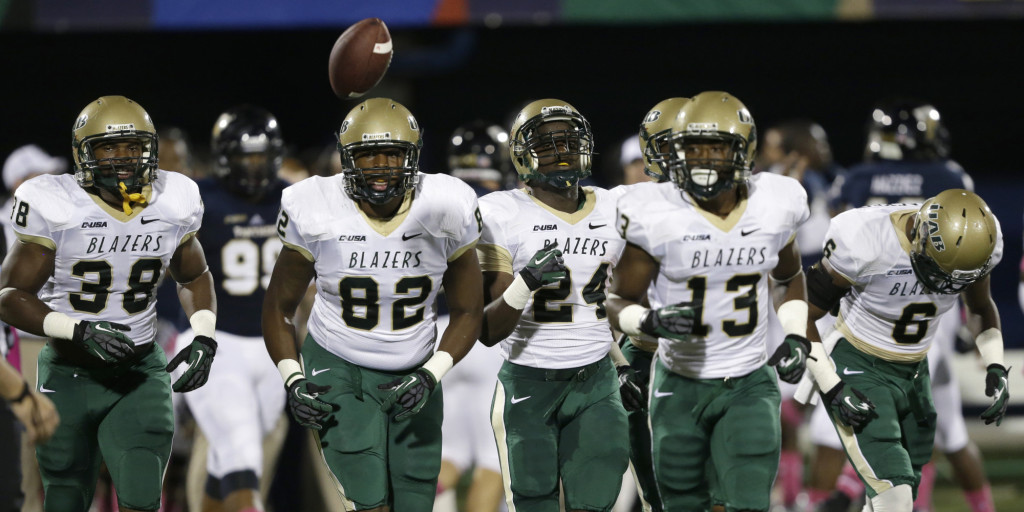
UAB President Ray Watts said Monday he is bringing the football program back as early as 2016, reversing a decision to shut it down because it was too expensive. Watts cited renewed financial commitment from supporters, students and the city as reasons for the change of heart. He said donors have pledged to make up the projected $17.2 million deficit over the next five years if football is restored,. Watts told The Associated Press he decided on Monday morning to reverse the earlier decision after meetings with UAB supporters continued through the weekend. “The biggest single difference is that we now have tangible commitment for additional support that we never had before,” Watts said at a news conference. In addition to reinstating football, Watts said Monday that he was also bringing back bowling and rifle. The study commissioned by the university was based on the programs being brought back in 2016. However, new athletic director Mark Ingram stopped short of guaranteeing 2016, saying only that the goal is to bring football back as soon as possible. Watts cut the programs last December after UAB commissioned a report saying it would cost $49 million over five years to field a competitive football program, generating both a groundswell of criticism for the decision and a rallying of financial support for the Blazers program. The president said UAB has dropped an indoor practice facility from the equation since the initial report, and has raised about 10 percent of the estimated $12.5 million to $14.5 million needed for a turf practice field and new fieldhouse. The December decision left players looking for teams and stirred fans, student and faculty groups to issue no-confidence votes against Watts. “This was a very difficult decision,” he said. “It broke our hearts to make that decision, and we are sorry for any consequences of that. But we are excited today that our community and supporters have come together. Had we not made that decision, which was based on sound information, that we wouldn’t be where we are today. We have never seen this level of support. It has been a painful process at times but it has been a process that has brought us to a new day.” UAB commissioned College Sports Solutions to review the initial report by CarrSports Consulting. The numbers were similar minus the indoor facility. Watts also said UAB’s cost of attendance could be about half the initial projected $5,000 per athlete, based on other Conference USA schools. The first season’s College Football Playoff payout also was higher than UAB had projected. Watts said that the initial projections “showed there was no way for us to cover that unless we took away from education and research and health care.” Watts said UAB sent documents to C-USA and NCAA notifying them of his decision, but he makes it clear UAB plans to remain in the league and play at the FBS level. Without football, UAB would have likely not have remained in C-USA, which has a bylaw requiring members to field football programs. C-USA Commissioner Britton Banowsky said members had not wanted to change the rule because “football is something that is critical to our long-term success and part of our core as a conference.” “It didn’t really come as a great surprise, but we’re very pleased with the decision to bring back football,” Banowsky told The AP. “As a conference, we’re committed to football so we welcome the good news that UAB football has been given another chance.” UAB will cap its subsidizing of athletics to $14.49 million for each of the next five years, about $200,000 less than the university paid in 2014. The City of Birmingham and UAB’s National Alumni Society have each pledged contributions to athletics while student government leaders will raise student fees. Those total $5.3 million with the balance of money coming from private donors. One thing that’s not on the table: UAB building an on-campus stadium to replace aging Legion Field. Watts said that’s up to the city and community to fund. “We will be happy to play in any new, modern facility that the city might choose to build,” he said. “We leave the specific type of facility and the exact location up to the mayor and city leaders and community leaders.” Now comes a huge rebuilding process on the field. Many of the players have moved onto other programs, leaving Clark and his staff to find recruits for 2016. Ingram said bringing football back “will bring a lot of renewed excitement around this program, that’s from top to bottom.” Clark issued a statement saying it was a relief that UAB football was being resurrected. “This is a critical first step toward UAB football’s new path,” Clark said. “It takes tremendous commitment and support to run a successful football program. We have a lot of work to do but we start anew today!” Republished with permission of The Associated Press.

